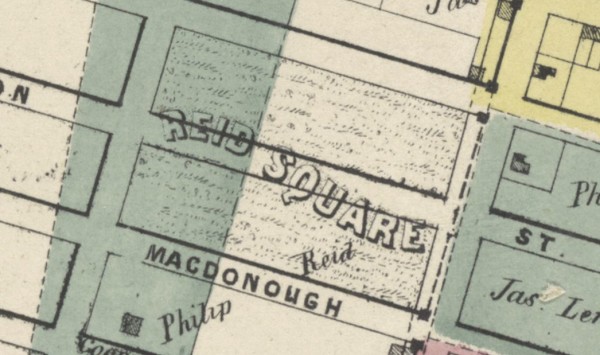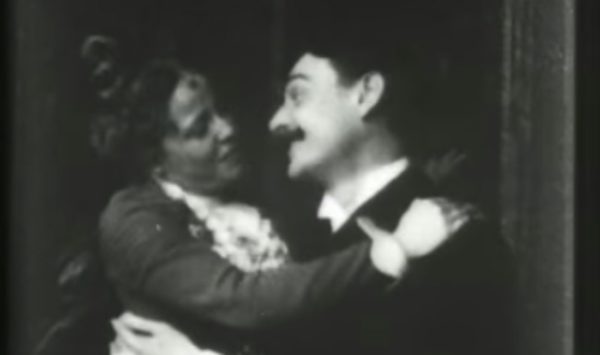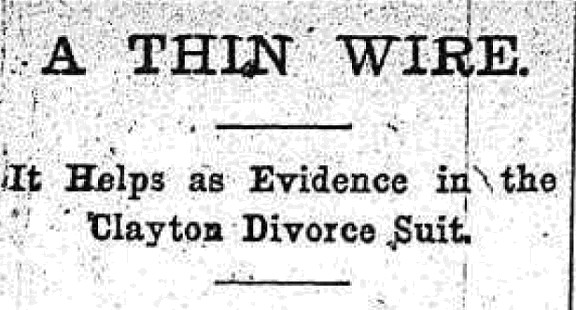THE LURE OF A MAID’S TOILET (1907)

******************************************************************************************************************************** Brownstone Detectives investigates the history of our clients’ homes. The story you are about to read was composed from research conducted in the course of one of those investigations. Do you know the history of YOUR house? ******************************************************************************************************************************** As Bay Ridge developed in the early 20th century, and residents moved deeper into South Brooklyn, developers used some intriguing townhouse features to lure buyers to the section of Brooklyn. One of those features was a dedicated commode. SELLING BAY RIDGE With an open-carriage automobile of the period parked purposefully outside these new “one family stone houses,” the Bay Ridge Development Company confidently announced in their advertisement that it was building “the entire block on Seventy-fifth St. Parkway, Between 4th and 5th Aves.” Bay Ridge was becoming the latest new neighborhood around this time, as developers expanded out from the Park Slope area further south through open fields and towards the city’s pleasure grounds – Coney Island. Suddenly, those fields were becoming more and more attractive as speculators snatched up lots and blocks and began construction. The houses in this particular ad were all “of 7 rooms, bath, laundry,” and included a feature which dictated the class of these structures and their prime location – one which no well-heeled buyer could fail to notice – a “maid’s toilet.” The houses’s other features were “hardwood trim, attractively planned, superbly built,” and one that was rather recent for the time – “electric lights.” The company also offered two choices in ranges – both […]
THE LONG SLOW DEATH OF REID SQUARE (1870)

******************************************************************************************************************************** Brownstone Detectives investigates the history of our clients’ homes. The story you are about to read was composed from research conducted in the course of one of those investigations. Do you know the history of YOUR house? ******************************************************************************************************************************** Laid down by the Brooklyn street grid commissioners in the 1830s, Reid Square was a planned park that was to be comprised of two of Brooklyn’s city blocks in the Town of Bedford. Named after the owner of the farmland that the once-future park was to grace, Philip Reid, Reid Square never ended up being developed. The Square was to be bounded by Reid and Stuyvesant Avenues and Halsey and MacDonough Streets. Macon Street, which, for all intents and purposes, would have passed directly through the square at its center, was to be closed at that point. In 1869, however, as the park had been laid out but not improved, the Committee on Opening Streets of the Brooklyn City Common Council met and proposed a resolution to “draft an act to the Legislature to close Reid Square and lay down Macon Street from Stuyvesant to Reid aves.” This proposal was adopted and later in April of 1869, the Legislature passed the act, dooming Reid Square to an historical footnote. It is quite probable that powerful real estate speculators at the time forced the planned public square into its stillborn state, allowing the properties on these streets to be broken up into lots and then sold at auction for development purposes. Follow @BrownstoneDetec […]
A BED-STUY BUILDER “GOES ASTRAY” (1891)

******************************************************************************************************************************** Brownstone Detectives investigates the history of our clients’ homes. The story you are about to read was composed from research conducted in the course of one of those investigations. Do you know the history of YOUR house? ******************************************************************************************************************************** One of the more colorful builders in the Bedford-Stuyvesant area before the turn of the century was Ransom F. Clayton. Clayton and his wife Hannah purchased entire blocks for development and became rich reselling land and building brownstones for occupancy. Clayton, approximately 60 years of age in the early 1890s, was the founder of the building firm Ransom F. Clayton & Son. In addition to being a builder, he had also been a jack-of-all-trades – a Civil War veteran, an inventor, a nominee for City Controller with the Prohibition Party, and a director and the treasurer of the Ocean Palace Elevated Railroad. In 1891, though, he could add to that list the title of “scoundrel.” For, in that year, having some years previous turned over the reins of his building firm to his son, Clayton was now being given the opportunity to lose the property in a highly publicized divorce scandal. Several newspapers of the time hyperventilated over the steamy details of the case, from the “plain black gown” that Mrs. Clayton wore to court, to the description of “the other woman,” Mrs. Margaret F. Oakley, who was “tall,” “finely formed,” and “richly attired,” and further to, finally, how the crowd in the packed court room erupted in applause when the […]
Hijinks on Herkimer, Pt. II

(To see Pt. I of Hijinks on Herkimer) It was not too long before, on one specific occasion, Wolfram took notice of Clayton approaching and entering their apartment building. Wolfram must have had a mouse’s ear, because he discerned from the top floor of the building that Ransom had not come upstairs but had entered an apartment on one of the first two floors. Wanting further evidence against Mrs. Oakley, Wolfram slipped down the stairs and went around the side of the house and “walked slowly by” the windows attached to Mrs. Oakley’s apartment, one of which belonged to her bedroom. As the blinds to the flat were “just a little open,” Wolfram peered though and saw the married man, Ransom, in Mrs. Oakley’s bedroom, a scandalous show of moral laxity at the time. Two nights later, Wolfram viewed Ransom returning to the apartment building and, subsequently, to Mrs. Oakley’s apartment. Wolfram must have drawn murmurs from the gathered crowd in the courtroom when he said what he observed next: Ransom did not depart Mrs. Oakley’s apartment until 6 am the following day. Determined, on the third try, to get the evidence that he needed to have Oakley banished from his building, Wolfram decided he would convince himself once and for all that what he had seen was enough to have her removed. Going out into the house’s front yard, he took a piece of thin wire with him and “fastened it to the gate so that when it was […]